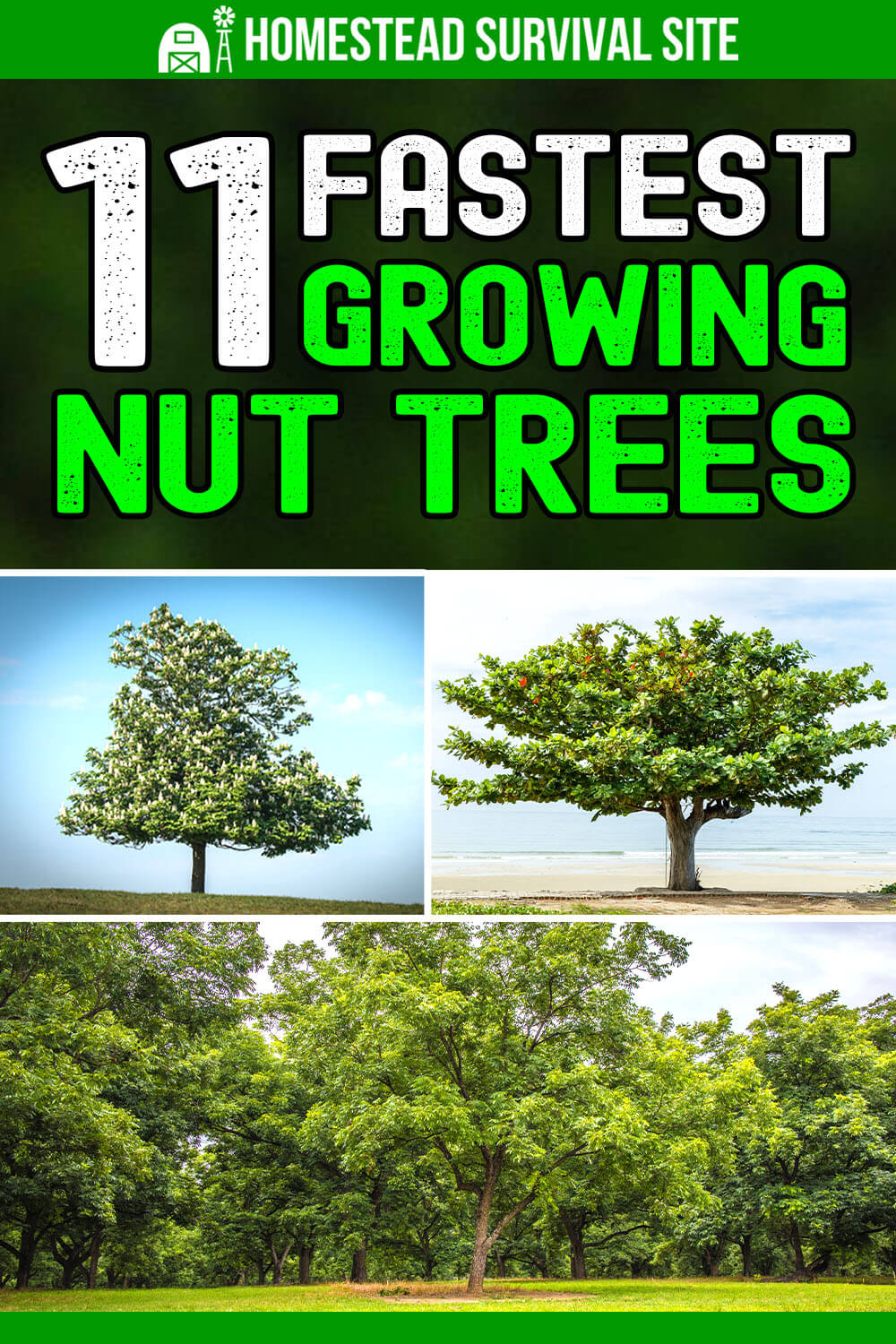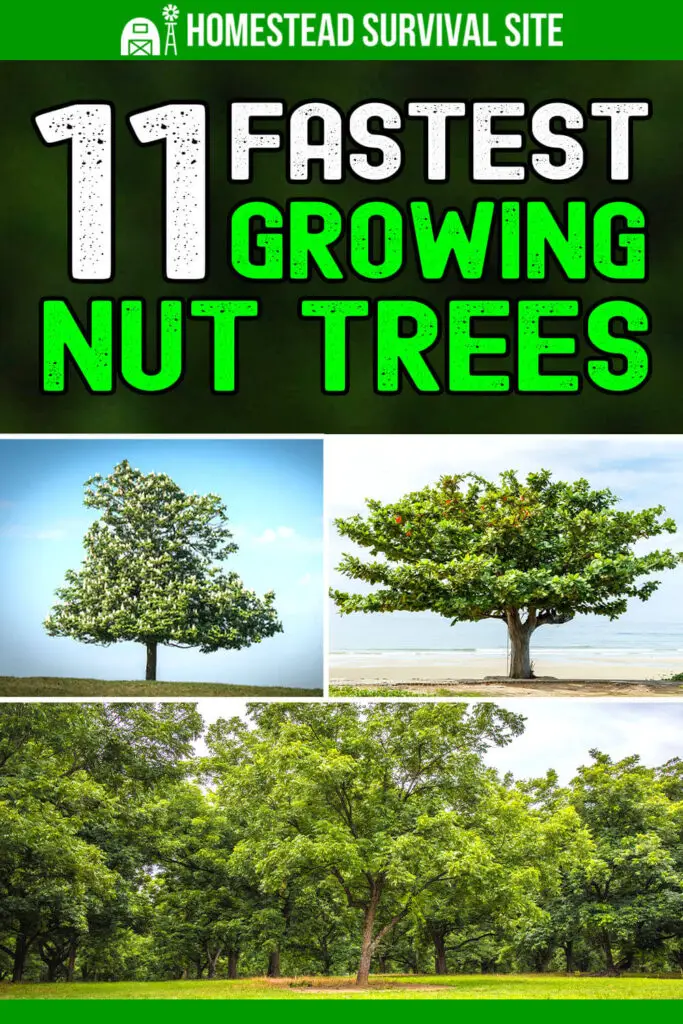Estimated reading time: 6 minutes
Nuts are a great addition to any prepper’s stockpile. They provide protein, which is probably the hardest nutrient for us to come up with, especially at a reasonable cost.
Should we ever be caught by a TEOTWAWKI event, nuts may end up being a major source of protein, along with beans, once our canned goods run out. For that reason, nuts are a great addition to the prepper’s garden.
There’s another important thing we can get from nuts: oil. Fats aren’t as hard to come up with as proteins are, but they can still be challenging.
We can pretty much forget about animal fats in a post-disaster world, as wild game doesn’t carry much fat and we won’t be able to waste grain to fatten up our livestock before slaughter. Rather, we’ll have to count on plant fats, which are healthier anyway.
Want to save this post for later? Click Here to Pin It On Pinterest!
Another good thing about nuts is that they store well, being packaged by nature in a protective wrapper that may not keep squirrels out, but does a pretty good job of keeping bacteria and other food-eating microorganisms out of them.
Although I will have to say, there is no guarantee that a nut in a shell won’t get infected by bacteria or other organisms. Nevertheless, our ancestors used to fill casks with nuts and bury them underground as a way of banking them as food for hard times.
Unfortunately, pretty much all nuts grow on trees, like most types of fruit. This means that we can’t expect to plant trees in the spring and receive a harvest in the fall. Rather, we can expect several years to go by between the time we plant our trees and the time we can start harvesting.
Obviously, there’s a real benefit to planting nut-bearing trees which will provide us with nuts quickly, rather than ones which take years to start bearing fruit. To do that, we need to be sure that we pick the right trees—ones that are known to grow quickly and start bearing nuts quickly too.
But there’s something even more important than this, and that’s making sure the trees will grow and bear nuts in the area where we live. The USDA (US Department of Agriculture) has broken the country down into 10 growing zones, based upon their average annual climate.
Plants and trees must be selected for the garden, which will grow in the growing zone you live in; otherwise, either the plants won’t grow at all or they will grow but not produce anything.
How Soon Do Trees Grow Nuts?
Each species of nut-growing tree has its own growing time, before it starts producing nuts. Within the species, individual trees will vary too. You can plant ten of the same type of nut trees at the same time and not all of them will start producing nuts the same year. Some will be faster than others, but usually not by more than a year or two.
Here are some of the fastest growing and producing nut trees you can buy:
| Nut Tree Type | Years Until First Harvest |
|---|---|
| Butternut Trees | 2 – 3 years |
| Almond Tree | 2 – 4 years |
| Chestnut Trees | 3 – 5 years |
| Heartnut Trees | 3 – 5 years |
| Black Walnut Tree | 4 – 7 years |
| English Walnut Trees | 4 – 7 years |
| Filbert-Hazelnut Trees | 6 – 8 years |
| Hickory Nut Trees | 8 – 10 years |
| Pecan Trees | 10 years |
Once your trees start producing nuts, they will continue for many years. Walnut trees, for example, ordinarily live for 130 to 150 years, but some have lived for over 300.
While they start producing nuts within 4 to 7 years, they don’t reach maximum production for about 30 years. However, once they do, they’ll continue producing for the rest of their lives, as long as the tree doesn’t become ill. Watch out for squirrels though, who will want to harvest your nuts for themselves.
There are several factors which can affect how quickly trees produce nuts, especially the ground they are planted in. The number of nuts and the quality of those nuts that most trees produce will have a lot to do with how much nutrition and water the tree is able to receive from the ground.
Nut trees need to be fertilized, either with fertilizer stakes or fertilizer spread on the ground. Fertilizer stakes work well for these trees. They should be driven into the ground at the drip line. That’s the outer edge of the tree’s foliage. This is where the smallest roots, which extract nutrients from the soil, are. The ideal time to fertilize them is in the spring, just before new growth begins.
If your area is going through a dry spell, water your nut trees once per week, giving the ground all around the tree a good soaking. As with fertilizer, the most effective place to water a tree isn’t at the base of the trunk, but rather at the drip line.
Nuts that Don’t Come From Trees
While almost all nuts come from trees, there are a couple which do not. This means that it is not necessary to wait for the tree to grow to harvest these nuts. While some grow time is still needed, it is much less than that for a tree.
Hazelnuts
Hazelnuts, sometimes called filberts, are a fairly common nut, which many people know the taste of from their coffee creamer or from chocolate candies that have hazelnut fillers. Yet the hazelnut is a great nut all by itself and extremely easy to grow.
They grow on bushes, which are hearty enough to be trimmed as topiaries, used as hedges and serve as foundation plantings. Hazelnut bushes reach maturity and start producing nuts at three years of age and are prolific producers.
Peanuts
The hearty peanut is actually not a nut, although we call it one and eat it as one. Rather, it is a legume (bean) that grows underground. Peanut plants are annuals and will start to produce mature nuts in as little as four to five months, making them the fastest-growing “nut” you can grow.
Perhaps that’s why they are so popular and so inexpensive. Peanuts will grow in any warm climate, with a growing zone of 5 and up. Thanks to the work of George Washington Carver, there are many uses for peanuts and their shells.
Like this post? Don't Forget to Pin It On Pinterest!
You May Also Like:













Is there a forging book you recommend for Northwesr Missouri.and with lots of pictures
Your Pinterest overlays print option. You consistently do things to ruin your site.
It would be good if you included the growing zones for each tree.